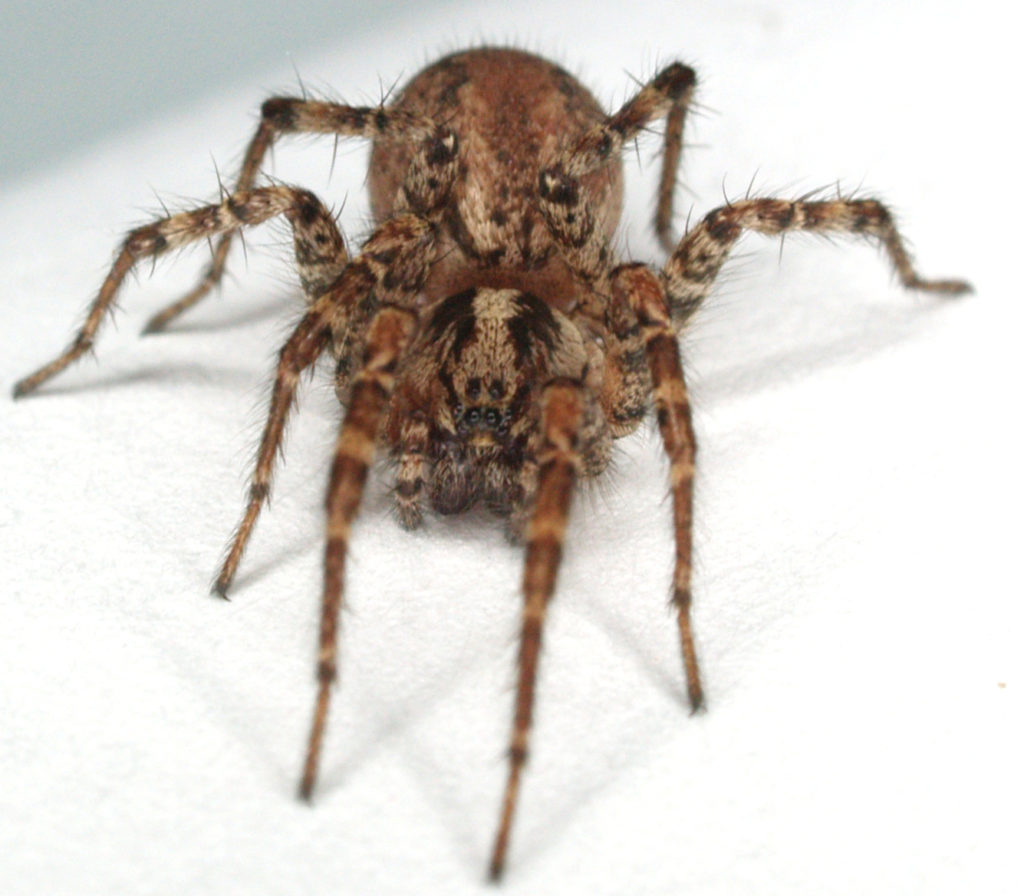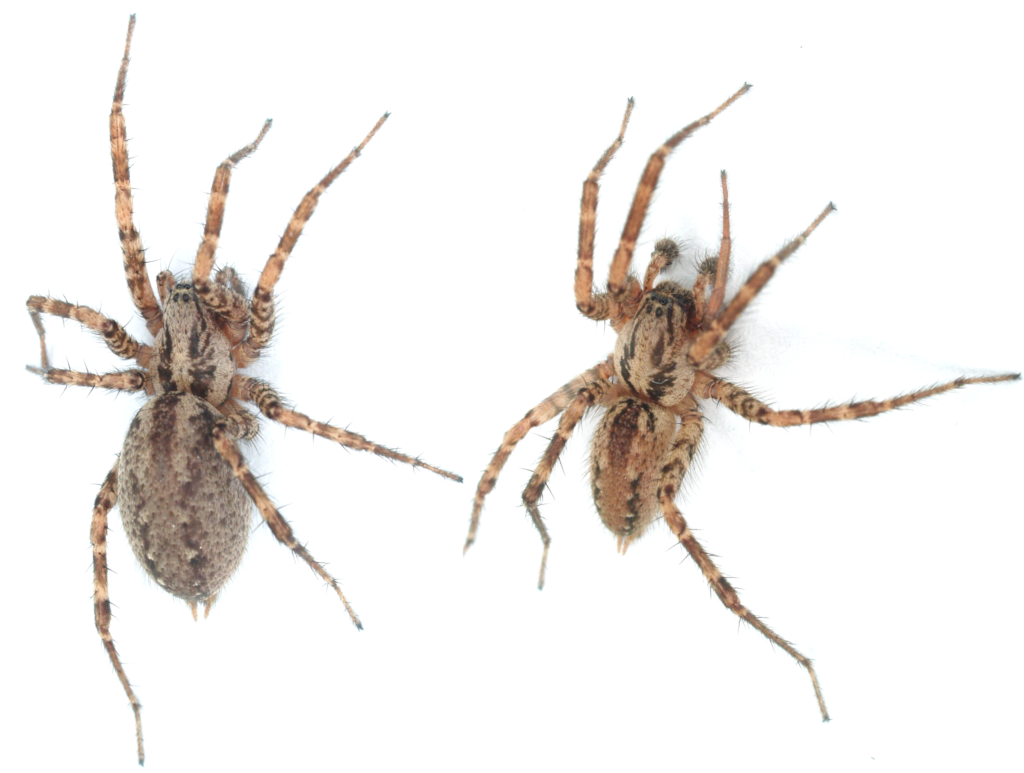Or, in this case, fool me twice.
A few months back, I was “vetting” some photographs that had been submitted to the North Carolina Biodiversity Project’s Arachnid page when I came across this photo, submitted as possibly being Agelenopsis pennsylvanica (C. L. Koch, 1843), one of the grass spiders (sometimes called “funnel weavers”) of the family Agelenidae.

Now, right off, it didn’t look to be Agelenopsis to me, for a number of reasons, none of which are easy to specify–it just didn’t look right.
When all one has is a photo, though, identifications can get tricky, and–my not being from ’round these parts–I didn’t recognize what seemed to me to be what should be a readily identified species.
I am generally hesitant to start searching online photo collections looking and hoping for a match: After all, not only do many spiders look similar, but online photos can be misidentified. So, I did the next logical thing: I asked a highly experienced person also working on the project if he had any thoughts.
He immediately responded with a likely ID of Barronopsis texana (Gertsch, 1934), another agelenid genus known from NC…and he was spot on, of course.
As B. texana was a species which I’d never seen (or even heard of) before, I naturally did some literature searching to learn something about it. First off, I learned why I was unfamiliar with it: It occurs from NC south through Florida, thence west into Texas: All my collecting has been in the Midwest and Northeast, so I’d simply never come across Barronopsis before.
So, armed with this knowledge, I was ready for my next encounter, right? Um…no, this is where the “fool me twice” bit kicks in, I’m embarrassed to admit.
A couple of months later, a neighbor brought a living spider to me, about which I immediately proclaimed (in my very best know-it-all-tones) “that’s an immature wolf spider!” and then–using the Occam’s Razor Theory of Spider Identification–promptly guessed at a species.
OK, I’m sure you see where this is going! When I got it under the microscope it was immediately clear that this was not a lycosid (wolf) spider at all, much less the species I had guessed. Nope, wrong family altogether, its being (as you’ve no doubt already surmised) another of the agelenid Barronopsis texana, of which I had so recently been totally ignorant–and, sadly, had apparently remained.

But, my suffering this ignominy did, at least, lead to a happy ending. A few weeks later, I was visiting a relative’s house some miles away when I found a spider molt skin having familiar markings. I looked around and found funnel webs on a building wall, from which webs I captured an adult female and an adult male B. texana. And this time I got it right!

Morals of the story:
- No matter how much I think I know, there is always someone who knows a lot more.
- Don’t hesitate to say “I’m not sure–let me get a closer look”.
- This is a very cool species!
- It’s so much fun to learn new things!





